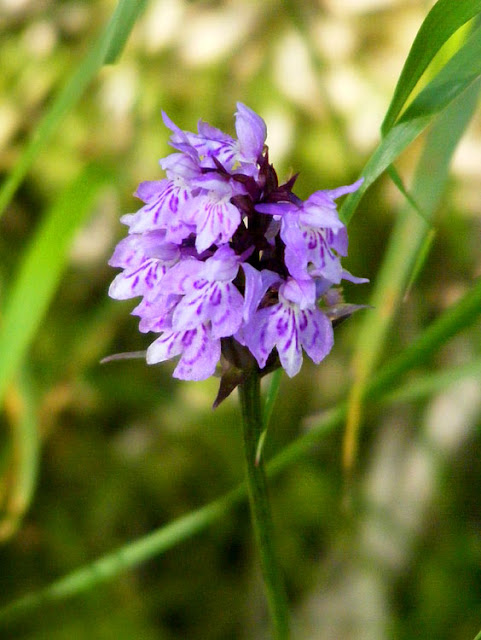Charles Darwin, that global household name, loved orchids and was intrigued by their many mysteries. He famously predicted that an unknown hitherto unobserved species of long tongued moth must be the nocturnal pollinator of the orchid Angraecum sesquipedale, a species with a particularly lengthy nectar carrying spur, endemic to Madagascar.
But one mystery, much closer to home, eluded him, and has only recently been solved. It concerns one of the most common wild orchids in Britain. We get it too in the Touraine Loire Valley but here it is not common, especially in the south where we live. I find it more on our travels especially in the mountains.
What Darwin never figured out was why the Common Spotted Orchid Dactylorhiza fuchsii (Fr. Orchis de Fuchs) is not scattered about everywhere. After all, their seeds are nearly microscopically small and can be easily dispersed by the wind. In the end though, it is their tiny size which provides the clue as to why Common Spotted Orchids grow in clumps and close knit colonies rather than in the more isolated and scattered way that one might at first think should be the case.
Common Spotted Orchid seeds are so small that they don't contain the supply of nutrients that the seeds of other plants tend to hold. That means to survive they must fall near enough to their parent plant to latch on to its network of mycorrhizal fungi, which will then supply the necessary nutrients. Common Spotted Orchids can be seen in large dense colonies, but few of the individual plants will be more than a few centimetres from an older, more established plant.
Further Reading: Dactylorhiza fuchsii on Loire Valley Nature




2 comments:
Indeed, and I use that fact every time I am asked whether it is possible to dig up and replant an orchid. Of course, the other arguments are used to - it's illegal, it's doomed to failure, it's growing where it wants to be, just admire it, it's not yours to take... and so on.
I read about the parental aid in various journals recently. I'd always known about the mycorrhiza being necessary for orchid germination, but this recent study is very interesting.
JGB: The link between mycorrhiza and orchids has been known since the ?19C (famous study of Birds-nest Orchid). So it is the specifics of this study which were interesting ie the strategy required for successful propagation. The mycorrhiza are clearly only in sufficient quantity/density around established plants and a seed falling too far from the parent plant is unlikely to land somewhere with mycorrhiza of the right sort or density for a new plant to germinate. It's a sort of closed circle.
Post a Comment